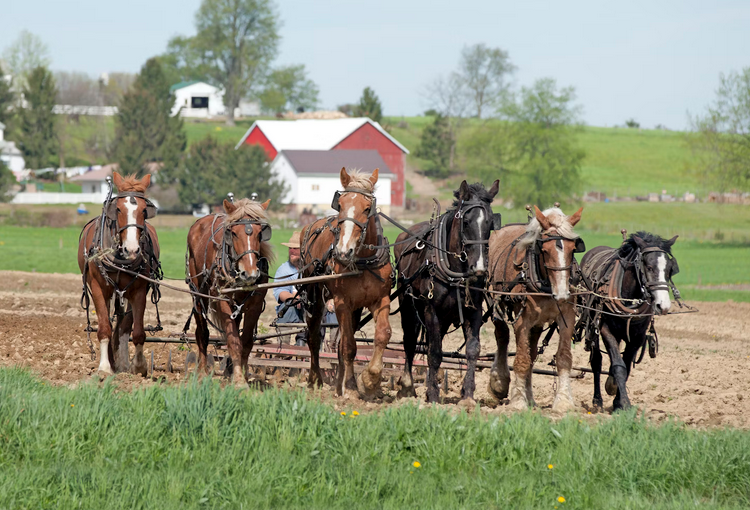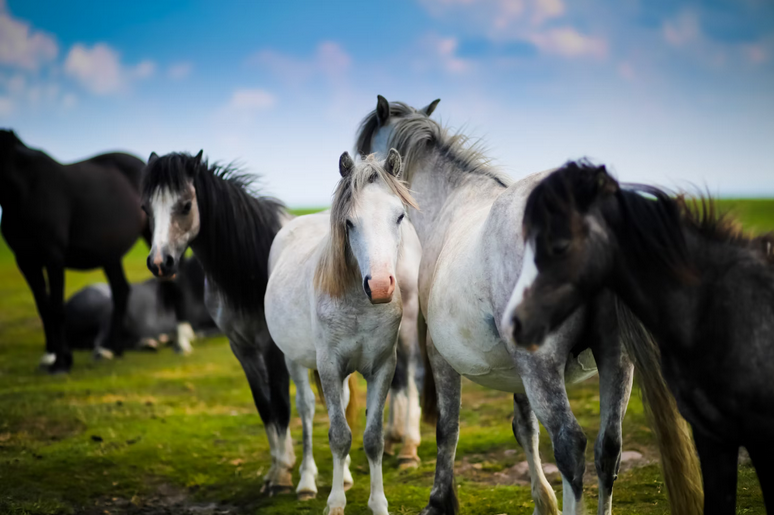If in Europe, especially the beginning of the Industrial Revolution, ponies played a crucial part in the coal mining operations, in many countries in Asia, such as Mongolia, Nepal, China, and India, ponies and other horses were also crucial in many sectors. In fact, in Asia, they have played a significant role in agriculture for thousands of years. These majestic animals have been an integral part of traditional farming practices and have greatly contributed to the development and success of agriculture in the region.
One of the main ways ponies have supported agriculture in Asia is through transportation. In many mountainous regions, ponies were the primary mode of transportation for farmers to travel to and from their farms. This was particularly important in areas with rugged terrain that was quite difficult to navigate on foot. But that’s not the only way work horses have helped human civilization in Asia throughout history. Let’s find out more about how ponies and other horses have harnessed tradition and supported agriculture in Asia.
Plowing and Harvesting
When it comes to plowing and harvesting, ponies have been the unsung heroes of Asian agriculture. Their powerful bodies and steady gait make them ideal partners in working the land. From breaking ground for new crops to bringing in the harvest, ponies have been at the forefront of these essential tasks.
In regions where machinery may be scarce or impractical, they provide a reliable and sustainable alternative for farmers. Their ability to navigate rough terrain and pull heavy loads makes them invaluable assets in ensuring a successful yield. The bond between horse and farmer runs deep, built on trust, respect, and mutual understanding.
Irrigation
Did you know that in many countries in Asia, many breeds of horses have played a crucial role in supporting irrigation practices for centuries? As powerful and agile animals, they have been instrumental in helping farmers transport water to fields for efficient irrigation.
Their strength allows them to pull heavy equipment, such as water pumps or carts filled with water, to remote areas that are difficult to access by other means. This has been particularly beneficial in regions where traditional methods of irrigation rely on manual labor or rudimentary tools. The use of horses in irrigation not only saves time and labor but also ensures a consistent water supply for crops, promoting higher yields and better crop quality.
Tillage and Cultivation

For centuries, ponies and horses have also played a crucial role in tillage and cultivation across Asia. With their strength and agility, these majestic animals have helped farmers prepare the soil for planting crops. In regions where traditional farming methods are still prevalent, horses continue to be invaluable assets when plowing fields. Their unique ability to dominate rough terrain makes them ideal partners in cultivating land efficiently.
The bond between farmer and horse is evident during the planting season as these animals tirelessly work alongside humans, ensuring that seeds are sown effectively. The rhythmic sound of hooves tilling the earth creates a harmonious melody of tradition and progress.
Herding and Livestock Management
Nomadic tribes relied on these majestic animals to move their herds across expansive grasslands, ensuring they had access to fresh pastures. The agility and speed of horses made them invaluable in guiding and controlling livestock during migrations. From the Mongolian steppes to the Indian subcontinent, ponies assisted herdsmen in keeping track of their cattle, sheep, and goats. Their presence not only facilitated the movement of animals but also provided a sense of security against predators that lurked in the wild.
Horses were trained to understand commands that helped shepherd dogs or herdsmen direct livestock towards water sources or shelter during harsh weather conditions. Their instinctive understanding of herd dynamics made them indispensable partners in managing large groups of animals effectively.


